Story
A RAD-ical Solution
Without clear options to revitalize small-town grocery access, a North Dakota community created its own
DATE
May 24, 2022
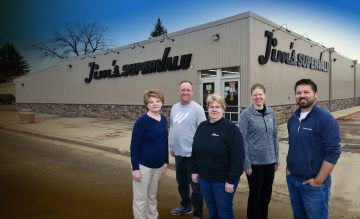
Julie Gemmill and her high school sweetheart, Keith, have been married nearly 50 years and raised their three sons — Mike, Tommy and Andy — in their small hometown of Fordville, ND. It had a population of 212 at the last census count in 2010, although Gemmill reckons that her hometown in northeastern North Dakota has grown over the past few years with young couples staying or moving back and starting families. Her grandson recently graduated from high school, class size: four.
In this farming and ranching community, high school sports play an important role, students get a lot of extra attention and time from teachers, and everyone knows one another.
“You can’t find people any prouder,” Gemmill says.
A self-described “local lady who cares about the town,” Gemmill is often called on at the spur of the moment to provide food for funerals, showers and other events. She makes everything from hotdishes to cakes, cupcakes and bars.
“Our pantry is stocked so that I can usually support those requests,” she says.
SMALL-TOWN STORES CLOSING
But about a decade ago, it became more difficult for her family to keep the pantry fully stocked when the Fordstore, the local, family-owned and operated grocery and hardware combination store that Gemmill preferred to shop at, closed permanently. It meant the nearest grocery store for Fordville residents was 20 miles away in Park River, qualifying it as a rural food desert by U.S. Department of Agriculture’s standards.
Fordville was not the only small town without nearby access to a grocery store. Lori Capouch, director of rural development for North Dakota Association of Rural Electric Cooperatives (NDAREC), estimates the state lost 20% of its grocery stores in a five-year span, before the COVID-19 pandemic hit. And according to an article in North Dakota Living, only 98 grocery stores remain today in North Dakota towns with fewer than 2,100 people.
About the same time the Fordville grocery store closed, officials at NDAREC started receiving phone calls from owners of other small, rural grocery stores looking for grants or other financial assistance to keep their business operations going. Capouch says there wasn’t even a centralized list of grocery stores at the time, so the organization started cold calling rural groceries to confirm that something, in fact, was afoot in the industry.
It was. Many rural groceries were struggling with their bottom lines as big-box and dollar stores moved into certain counties, diverting where dollars were spent. The rural groceries also faced wholesale buying concerns. Those costs are set by how much volume a store can take, and a town like Fordville, of less than 300 people, can’t take very much. With each new shuttering of a store, Capouch says the community suffers. She thinks there is a real danger of losing small-town life in general if the trend continues.
“In order to keep families in your town, you need to have access to food,” she says. “If you’re trying to attract a new employee to move to work for a business there, one of the first things that family is going to look around for is, ‘Where am I going to get my food? How far do I have to drive for my food?’”
SEEKING SOLUTIONS
Gemmill reached out to Capouch to see about opening a grocery store in Fordville, but with so few residents, the project was untenable. Still, the two, along with others in the community, were determined to find a solution to the shifting food landscape in their state. By coming together to brainstorm ideas and form a collaboration instead of compete with each other, “in the face of no options,” these communities found one, Capouch says.
But it took a lot of work.
In 2014, NDAREC started surveying rural groceries to determine sustainability challenges and what could be done to improve those challenges. Around that same time, Gemmill was involved in the Rural Leadership North Dakota program where she was working to bring healthy food access back to Fordville. The two were connected through the Walsh County Job Development Authority.
They spent some time sharing what each had learned and tried to come up with solutions for Fordville. At that time, the residents were interested in having their own grocery store, but given the low population and purchasing power challenges, starting a store wasn’t feasible. So, Gemmill attended the first North Dakota Rural Grocery Summit in Mandan, ND in 2015. It was there that the survey results got shared with grocers and interested community leaders.
The solution that came out of all of this field work was the creation of the Rural Access Distribution (RAD) cooperative, a pilot program made possible in part by a 2020 Bush Foundation Community Innovation Grant.
The RAD cooperative has three goals: start a cooperative purchasing program to lower overall prices and increase the amount and variety of food and products; implement an online shopping platform for all residents that individual stores couldn’t afford to create individually; and find creative ways to bring food to communities without grocery stores.
For the entire nonprofit program, leaders and volunteers in the Walsh County communities of Adams and Fordville, along with grocery stores in Hoople, Edinburg and Park River, joined together. For the cooperative purchasing program, the three grocery stores worked collaboratively to take advantage of better wholesale pricing, which is one of the factors that makes rural grocery prices more expensive, and to expand the selection of food and other items. They coordinated cooperative truck deliveries to stores and other drop points.
Another aspect of RAD allows residents in the five communities to order groceries online. The cost to create this digital platform was shared as part of the grant, with everyone realizing that no one grocery store had the funds or capacity to develop the online system alone.
A third initiative adds climate-controlled grocery lockers in Adams and Fordville, the two communities without grocery stores. According to an article in North Dakota Living, the innovative lockers will be located in Fordville at the bar and restaurant Wells Drinking Well, and customers will receive a code to retrieve their groceries from the lockers when they are delivered each week. In Adams, the lockers will be located outside, next to the restaurant on main street.
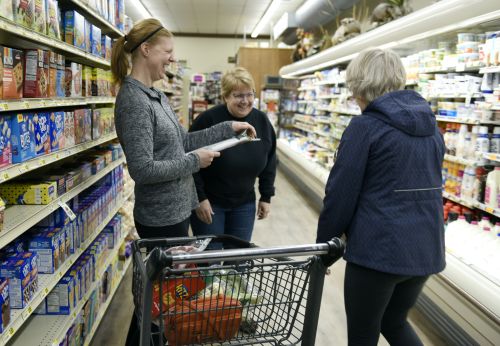
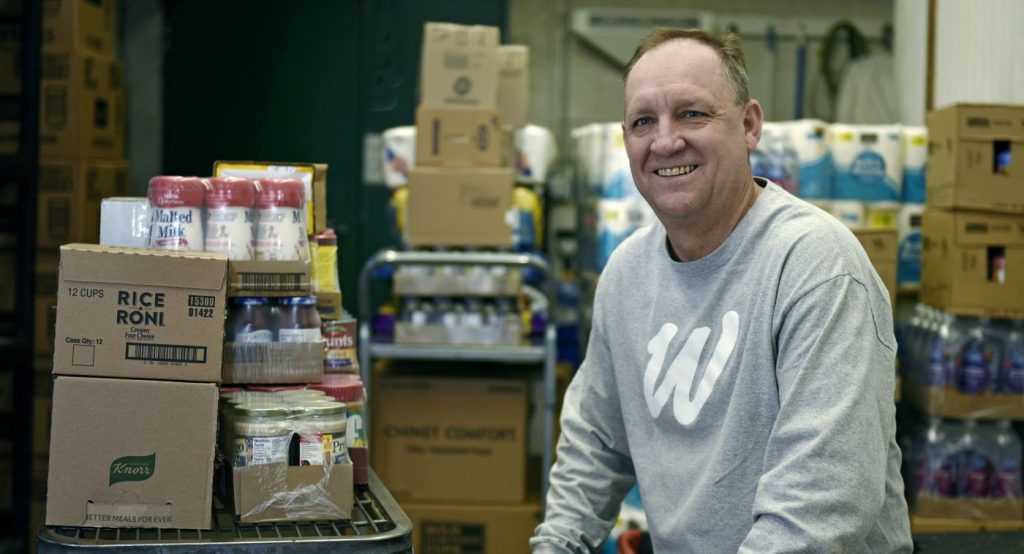
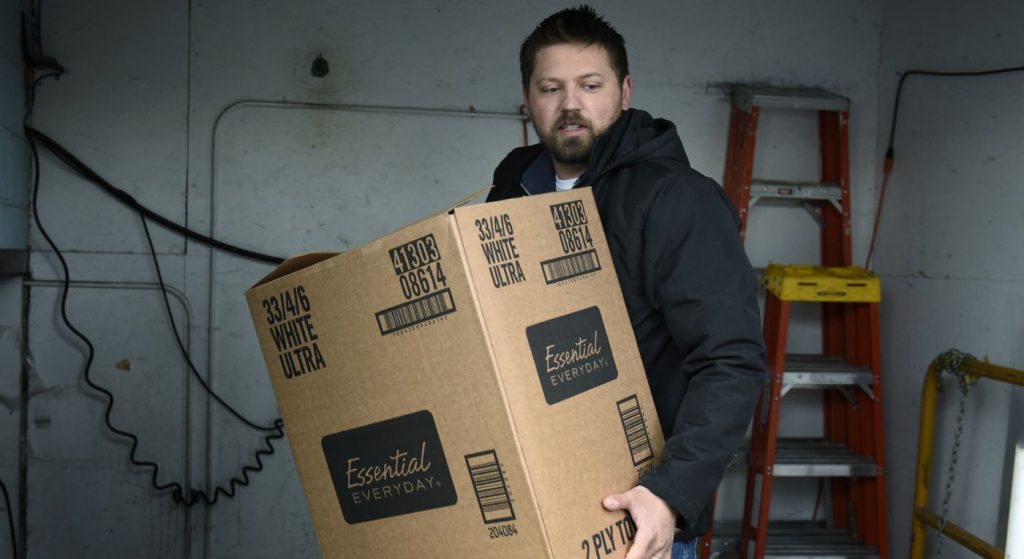
COMING TOGETHER
About 20 minutes from Fordville is Park River, ND, where Diana Hahn and her husband, Randy, own the Jim’s SuperValu that Diana’s parents had owned since 1986. Hahn says she was going to be a CPA “at a big firm somewhere,” but like a lot of people from small towns, she came to understand that “family was more important.”
“People, connection, knowing people — sitting behind a desk isn’t for me. I’d rather be out on the floor with customers,” she says.
“Everybody looks out for everybody,” Hahn says. “Not everybody wants to live in a Minneapolis, or even in a Grand Forks, but we still have to keep our communities viable.”
At the store, Randy runs the meat department where he cuts, smokes and curates meats, and they know all of their customers by name. Those customers know Randy as “The Bacon Man.”
“Everybody looks out for everybody,” Hahn says. “Not everybody wants to live in a Minneapolis, or even in a Grand Forks, but we still have to keep our communities viable.”
Hahn says a viable community means access to decent, affordable food, which makes her community “together, stronger and stronger together.” That’s why Jim’s SuperValu is one of the three grocery stores participating in the RAD cooperative.
“This is a great opportunity for our small communities,” Hahn told the North Dakota Living publication. “Not every community is large enough to have a full-service grocery store, so even if there’s only a small convenience store in your town, this model could work in your community.”
THE RESULTS
Capouch is excited about the possibilities. “I was fortunate to have the view of the state as a whole and witness a trend,” she says. “Stores were quietly closing, feeling the failure on their own, believing it was something they had done wrong, rather than understanding it was changes in the industry that was forcing out small retailers. It’s powerful to have the data and to be able to connect the narrative in a way that inspires people to try something new.”
She continues: “We would not have been able to move forward without the Bush Foundation funding. The funding has given us the flexibility to hire people to develop systems for this pioneering cooperative, such as specialized software for offering online shopping to independent grocers, and integration with a remote locker system.”
Capouch says RAD is working with the North Dakota State University’s Center for Social Research to provide an impact evaluation. “If we are successful, this piece will be extremely helpful in helping us replicate the project across the state,” she says. “It will demonstrate the benefits of regional collaboration to grocers and the community.”
Gemmill, too, says the project seems to be off to a great start: “The end result is to prove that this can work and be duplicated elsewhere. People are excited to be able to buy more food locally and say, ‘Gee, maybe I don’t have to leave town for this.’ We’re not looking to go backward. We’re looking to go forward.”
Insights for Community-driven Problem Solving
BASED ON GEMMILL’S AND CAPOUCH’S COLLABORATION
If other people wanted to come together to solve a community challenge but didn’t know how, what action steps would you recommend based on your experience?
It’s important to first understand the issue and why you have the challenge. Information is a powerful tool to bring people together to develop solutions and move past competitiveness. Next, bring the community together and be open to their ideas. Hiring a third-party consultant is not a bad idea once you have reached the state of investigating the feasibility of community input. Work to build a consensus, as well as build a thorough understanding of the benefits. This step helps people work collaboratively. Also, respect community contributions: people love to be a part of solutions that make a community stronger.
What worked for you and your collaborators, and what didn’t?
We organized a steering committee made up of people wanting to build a business, as well as resource providers like NDAREC and the Walsh County Jobs Development Authority. The resource providers were able to create action items based on the information they gathered at meetings. This worked well.
Challenges included pandemic-related issues such as having to meet virtually (though not having to commute became a relief) and the cost of everything rising thanks to inflation. One of the things we wanted to measure was whether food would be more affordable under the program, which became difficult to quantify with the cost of groceries going up all over the country.
Another learning moment was that the organizing happened from the top down. Instead of starting with the community, which is how true grassroots organizing usually works, we already had some of the solutions in mind before we went to the community. We should have organized the community and allowed them to do their own learning before we had any planning in place.
What lessons did you learn?
The cooperative could have emerged as a for-profit business but instead organically developed into a benefit for the community. This made the cooperative much stronger as people are attracted to feel-good efforts. People are more willing to donate time and money for the good of their community.
Also, there isn’t just one solution to any problem — it’s important to remain open to new ideas and be willing to think outside the box. It can be helpful to have a person with a natural leadership style in place. Often it takes this kind of personality to take a risk before the others in a group will follow.
And finally, patience and persistence will pay off.
Mecca Bos is a Twin Cities based food writer, chef, and podcaster. She focuses on BIPOC voices and uncovering hidden stories. Tacos and travel are hobbies. Read her in national and local publications, and check out her latest radio and video documentary projects with Minnesota Public Radio and Sahan Journal.
Based in Fargo, N.D., Dan Koeck photographs people and news events in the region for editorial clients. He grew up in St. Paul and graduated with a degree in photojournalism and history from the University of Minnesota. Dan mentors youth as a volunteer with the Big Brother Big Sister program in Fargo, and enjoys hiking, bicycling, and traveling.
Continue reading
-
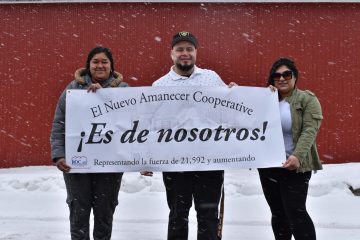
Story
CoNorth helps residents take ownership
A model of cooperative ownership for manufactured home communities is expanding what affordable housing can look like
-

News
Power of Bridging event
Mark your calendars for a special community event with john a. powell! Thanks to our friends at MPR News, we'll be hosting john at the Fitzgerald Theater on December 2 and hope you can join us!
-

News
Celebrating the 2025 Bush Prize honorees
Learn more about the 2025 Bush Prize honorees who are helping to make our region better for everyone!